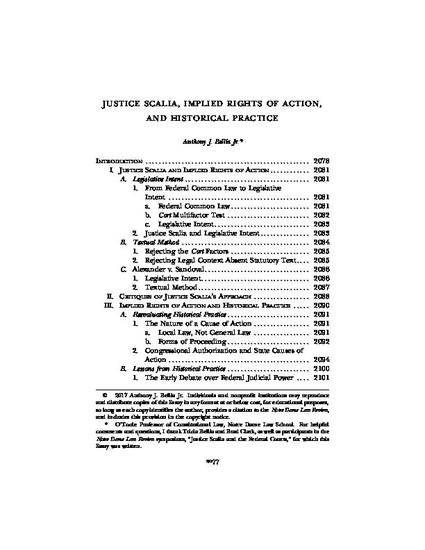
In the realm of Federal Courts, the question of “implied rights of action” asks when, if ever, may a plaintiff bring a federal right of action for the violation of a federal statute that does not expressly create one. Justice Scalia argued that a court should not entertain an action for damages for the violation of a federal statute unless the text of the statute demonstrates that Congress meant to create a right of action. The Supreme Court adopted this approach in 2001 in Alexander v. Sandoval, with Justice Scalia writing for the majority. Certain judges and scholars have argued that this approach is not faithful to historical practice. Specifically, they claim that federal courts have adjudicated common law actions for violations of federal statutes since the time of the founding without regard for whether the violated federal statute itself created a cause of action. This historical practice, they contend, demonstrates that federal courts have power to adjudicate private damages claims for the violation of a federal statute regardless of whether the statute itself authorizes a cause of action. This Essay argues that historical practice in fact does not refute the approach that Justice Scalia articulated for the Court in Sandoval. The claim that federal courts historically adjudicated common law actions for federal statutory violations, independently of any congressional action, overlooks important early acts of Congress. In the Process Acts of 1789 and 1792, Congress directed federal courts to borrow state causes of action to remedy common law injuries, including injuries resulting from the violation of a federal statute. Pursuant to these directives, when federal courts historically adjudicated common law causes of action for federal statutory violations, they were not doing so simply upon their own authority; rather, they were doing so pursuant to congressional authorization. Regardless of whether historical practice proves Justice Scalia’s approach — that federal courts need congressional authorization to provide a damages remedy for a federal statutory violation — historical practice certainly does not disprove it.
Available at: http://works.bepress.com/anthony_bellia/36/
